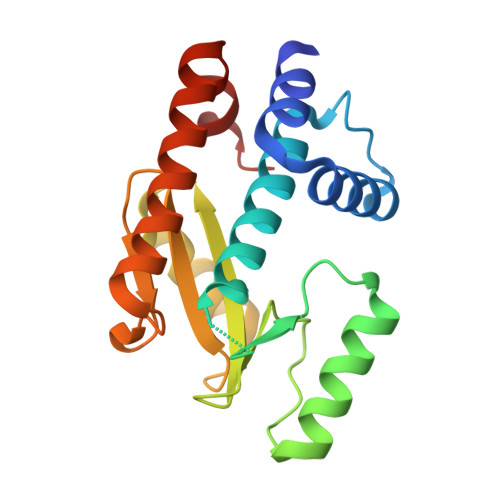Structural Studies of Inhibitors with Clinically Relevant Influenza Endonuclease Variants.
Kohlbrand, A.J., Stokes, R.W., Sankaran, B., Cohen, S.M.(2024) Biochemistry 63: 264-272
- PubMed: 38190441
- DOI: https://doi.org/10.1021/acs.biochem.3c00536
- Primary Citation of Related Structures:
8T5V, 8T5W, 8T5Z, 8T67, 8T6Z, 8T81, 8T94, 8VGZ - PubMed Abstract:
Vital to the treatment of influenza is the use of antivirals such as Oseltamivir (Tamiflu) and Zanamivir (Relenza); however, antiviral resistance is becoming an increasing problem for these therapeutics. The RNA-dependent RNA polymerase acidic N-terminal (PA N ) endonuclease, a critical component of influenza viral replication machinery, is an antiviral target that was recently validated with the approval of Baloxavir Marboxil (BXM). Despite its clinical success, BXM has demonstrated susceptibility to resistance mutations, specifically the I38T, E23K, and A36 V mutants of PA N . To better understand the effects of these mutations on BXM resistance and improve the design of more robust therapeutics, this study examines key differences in protein-inhibitor interactions with two inhibitors and the I38T, E23K, and A36 V mutants. Differences in inhibitor binding were evaluated by measuring changes in binding to PA N using two biophysical methods. The binding mode of two distinct inhibitors was determined crystallographically with both wild-type and mutant forms of PA N . Collectively, these studies give some insight into the mechanism of antiviral resistance of these mutants.
- Department of Chemistry and Biochemistry, University of California, La Jolla, California 92093, United States.
Organizational Affiliation:

















